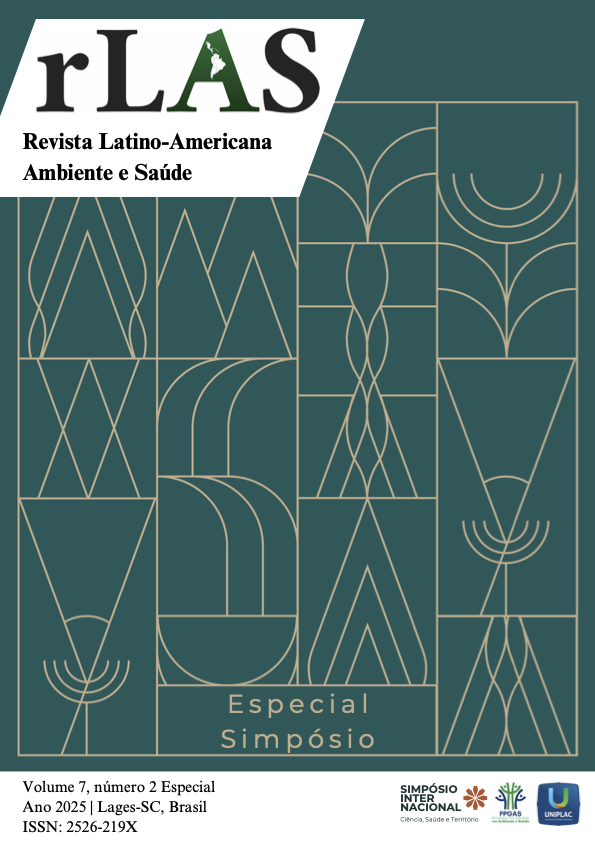Assessment methods for sarcopenia in cardiac patients: an integrative review
Keywords:
Sarcopenia, Assessment methods, Cardiovascular diseasesAbstract
Sarcopenia is characterized by the progressive loss of muscle mass and function, especially in older adults, and is associated with falls, frailty, and increased mortality. Factors such as physical inactivity, aging, and low protein intake contribute to its progression. In Brazil, screening is frequently performed using the SARC-CalF, although methods such as dual-energy X-ray absorptiometry (DEXA) and computed tomography (CT) are considered gold standards due to their accuracy. This study conducted an integrative review aimed at investigating methods for assessing muscle mass to identify sarcopenia. A total of 546 studies were identified, of which 28 were selected for final analysis. Among the evaluated methods, DEXA and the AWGS protocol were the most commonly used, along with techniques such as magnetic resonance imaging (MRI), bioelectrical impedance analysis, handgrip strength, and calf circumference. The AWGS and EWGSOP guidelines recommend combined assessments based on physical tests (such as gait speed), imaging exams, and questionnaires like the SARC-F. Each method offers specific advantages regarding sensitivity, accessibility, and clinical applicability, making it essential to consider the population profile and available resources. Therefore, sarcopenia assessment should adopt a multidimensional approach, combining diagnostic accuracy and practical feasibility, with a focus on early detection and interventions that can prevent complications and improve the quality of life of individuals with sarcopenia and heart disease.
References
BROWN, L. R. et al. Body weight and composition endpoints in cancer cachexia clinical trials: Systematic Review 4 of the cachexia endpoints series. Journal of Cachexia, Sarcopenia and Muscle, v. 15, n. 3, p. 816–852, jun. 2024.
CHEN, X. et al. Sarcopenia and coronary heart disease synergistically increase the risk of new onset depressive symptoms in older adults. BMC Geriatrics, v. 21, n. 1, p. 731, dez. 2021.
CRUZ-JENTOFT, A. J. et al. Sarcopenia: revised European consensus on definition and diagnosis. Age and Ageing, v. 48, n. 1, p. 16–31, 1 jan. 2019.
CURTIS, M. et al. Associations between Body Mass Index and Probable Sarcopenia in Community-Dwelling Older Adults. Nutrients, v. 15, n. 6, p. 1505, 21 mar. 2023.
DVORETSKIY, S. et al. Exploring the Association between Vascular Dysfunction and Skeletal Muscle Mass, Strength and Function in Healthy Adults: A Systematic Review. Nutrients, v. 12, n. 3, p. 715, 7 mar. 2020.
GAO, K. et al. Association between sarcopenia and cardiovascular disease among middle-aged and older adults: Findings from the China health and retirement longitudinal study. eClinical Medicine, v. 44, p. 101264, fev. 2022.
HE, J. et al. Genetic Association and Potential Mediators between Sarcopenia and Coronary Heart Disease: A Bidirectional Two-Sample, Two-Step Mendelian Randomization Study. Nutrients, v. 15, n. 13, p. 3013, 1 jul. 2023.
IKEUE, K. et al. A combined index of waist circumference and muscle quality is associated with cardiovascular disease risk factor accumulation in Japanese obese patients: a cross-sectional study. Endocrine, v. 77, n. 1, p. 30–40, jun. 2022.
KASSANOS, P. Bioimpedance Sensors: A Tutorial. IEEE Sensors Journal, v. 21, n. 20, p. 22190–22219, 15 out. 2021.
LEE, M. J. et al. Association Between Muscle Quality Measured by Abdominal Computed Tomography and Subclinical Coronary Atherosclerosis. Arteriosclerosis, Thrombosis, and Vascular Biology, v. 41, n. 2, fev. 2021.
OKUNO, A. Y. et al. Sarcopenia e nutrição: revisão da literatura: Sarcopenia and nutrition: literature review. Ulakes Journal of Medicine, v. 3, n. 2, 6 set. 2023.
SANTANA, N. M. et al. Sarcopenia and sarcopenic obesity as prognostic predictors in hospitalized elderly patients with acute myocardial infarction. Einstein (São Paulo), v. 17, n. 4, p. eAO4632, 14 ago. 2019.
SBGG. Sociedade Brasileira de Geriatria e Gerontologia. Diagnóstico e tratamento da Sarcopenia. 2022. Disponível em: https://sbgg.org.br/diagnostico-e-tratamento-da-sarcopenia/ Acesso em: 22 de abril de 2025.
VON HAEHLING, S. Muscle wasting and sarcopenia in heart failure: a brief overview of the current literature. ESC Heart Failure, v. 5, n. 6, p. 1074–1082, dez. 2018.
WU, S.-E.; CHEN, W.-L. Calf circumference refines sarcopenia in correlating with mortality risk. Age and Ageing, v. 51, n. 2, p. afab239, 2 fev. 2022.
YUAN, S.; LARSSON, S. C. Epidemiology of sarcopenia: Prevalence, risk factors, and consequences. Metabolism, v. 144, p. 155533, jul. 2023.
ZUO, X. et al. Sarcopenia and cardiovascular diseases: A systematic review and meta‐analysis. Journal of Cachexia, Sarcopenia and Muscle, v. 14, n. 3, p. 1183–1198, jun. 2023.
ZWART, A. T. et al. Skeletal muscle mass and sarcopenia can be determined with 1.5-T and 3-T neck MRI scans, in the event that no neck CT scan is performed. European Radiology, v. 31, n. 6, p. 4053–4062, jun. 2021.


